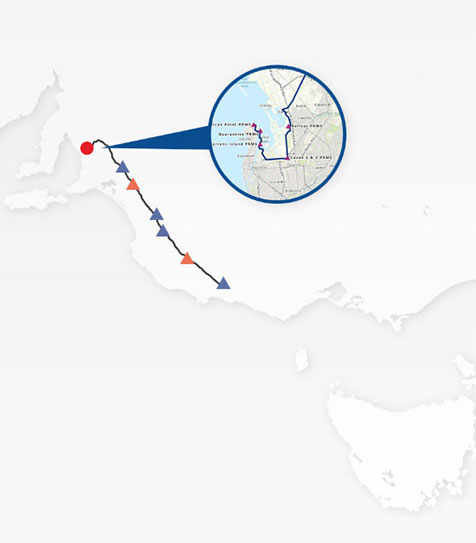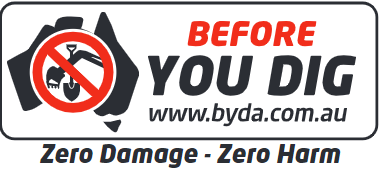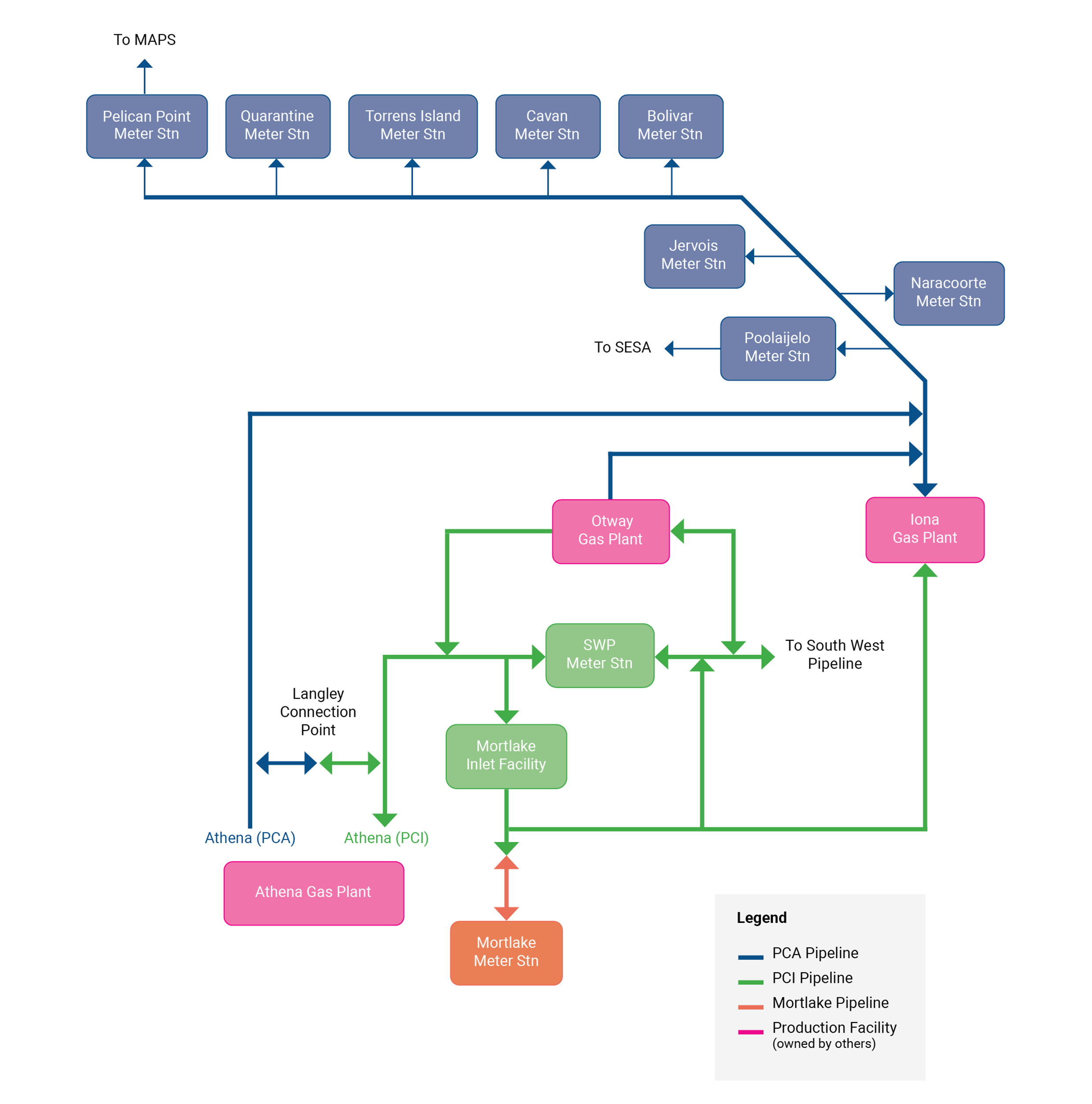SEA Gas Pipeline System
SEA Gas operates the transmission pipeline systems that transport natural gas from Port Campbell and Iona in Victoria to various offtakes and interconnected pipeline systems in South Australia and Victoria.
The primary function of a pipeline system is to provide safe, reliable transportation of high pressure gas.
Approximately 50% of Adelaide’s natural gas energy needs are delivered by SEA Gas.
The pipelines operated by SEA Gas include the:
- Port Campbell to Adelaide pipeline (including the WUGS Lateral) (PCA);
- Port Campbell to Iona pipeline (PCI); and
- Mortlake pipeline.
Port Campbell to Adelaide Pipeline (PCA)
The PCA is the main pipeline in the SEA Gas pipeline system.
The length of the PCA is approximately 680km, traversing from Port Campbell in South West Victoria to Pelican Point in South Australia. For approximately half of this length the PCA consists of twin 14′ diameter pipes with the remainder being single 18′ diameter pipe.
There are two compressor stations located on the PCA; one at Coomandook, in South Australia and the other at Miakite, in Victoria.
The 18′ diameter WUGS Lateral is part of the PCA pipeline and connects to the Iona Gas Plant and Otway Gas Production Facility.
Port Campbell to Iona Pipeline (PCI)
The PCI is approximately 11km long and traverses between the Athena Gas Plant and the Victorian Declared Transmission System (DTS), where it connects to the South West Pipeline (SWP). It also connects to Otway Gas Production Facility and to the Mortlake pipeline.
The Victorian DTS is owned and maintained by APA Group and operated by Australian Energy Market Operator (AEMO). The PCI connects to the PCA via the Langley connection point, which is just north of the Athena Gas Plant.
Mortlake Pipeline
The Mortlake pipeline is a 20′ diameter pipeline which is approximately 83km long and enables delivery of gas from the PCI to Mortlake Power Station.








